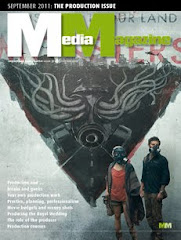...In Romero’s revisions, the 1990’s Barbara begins the narrative in a similar manner to her 1969 counterpart but, instead of regressing into catatonia, she is becomes a positive force, an active, capable and strong person. The 1990’s Barbara becomes a continuation of the character Sarah from Day of the Dead (1985): as a scientist Sarah is written as someone who is fully aware of the situation, one who has a strong ethical stance and is driven to search for a practical solution to the undead threat. As an individual person, Romero writes her as a mature, sexual and capable woman. And, when the undead attack or bite, she proves herself to be an aggressive and effective survivor. The 1990’s Barbara demonstrates all of these qualities, consistently proving herself and consistently proving that for all the protective and macho posturing of Ben and Cooper, she is the most mature and masculine of them all.
Romero begins his remake in the same way as his original, with Johnny driving Barbara to the cemetery. As they drive through the desolate landscape, brother and sister bicker about their deceased mother. As the argument develops, Johnny accuses Barbara of being afraid of their mother. She immediately denies this but Johnny pursues the accusation by commenting that “She damn near drove you into a convent” and then “When was the last time you had a date?” Johnny’s implication of repression becomes all the more apparent when Barbara steps out of the car: bespectacled, she wears a blouse buttoned up to the collar over which she wears a pink knitted cardigan. Her heavy woollen skirt hangs below her knees.
As they approach their mother’s grave, Johnny continues his taunts until, inevitably, the first of the undead attacks, grabbing then clawing at Barbara. Both fall to the ground, Barbara’s glasses knocked from her face as they do so. As she tries to defend herself, Johnny attempts to pull the zombie off but his attempts are hampered by Barbara who, throughout the brief struggle, manages to both accidentally kick her brother’s face and stab his hand. As the struggle continues Barbara loses her cardigan, the top buttons of her blouse come undone and her shiny black shoes come off. The attack ends with Johnny managing to drag the undead person off his sister only to slip on one of her lost shoes and, as he falls, breaks his neck on a tombstone.
This opening sequence, although reasonably similar to the original, has great importance to the revised Barbara. Her life, up until this point, has clearly been dominated by her mother to the extent that her confidence and sexuality have been suffocated. During the opening struggle the clothes of her repression – the glasses, the cardigan, and the concealing blouse – are all stripped from her and her brother killed. Symbolically the dead have inadvertently undressed her of her repressed state.













